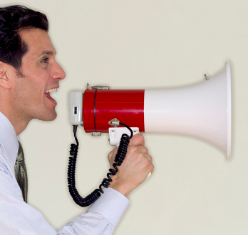Patent Pro Bono Program Grows: My Interview With Jennifer Mcdowell, Coordinator Of The U.S. Patent Pro Bono Program
This week, I have the pleasure of interviewing Jennifer McDowell, Coordinator of the USPTO’s Patent Pro Bono Program. Jenny, along with others on the Pro Bono Team, are tasked with ensuring that the Patent Pro Bono Program is fully implemented in all 50 states and that qualifying inventors have access to patent pro bono services under the program.
Kathy: Jenny, what is the Patent Pro Bono Program?
Jenny: The Patent Pro Bono Program provides free legal assistance to inventors of modest means who are interested in securing patents to protect their inventions. The Program is a product of the America Invents Act (AIA), which was signed into law in 2011. Under this legislation the U.S. Patent and Trademark Office was called upon to begin working with intellectual property law associations across the country to establish programs to assist financially under-resourced independent inventors and small businesses. Then, in February 2014, the President issued an Executive Action calling for expansion of the pro bono programs originally set up under the AIA into all 50 states. As a result of the Executive Action, new pro bono programs have been created, and many of the existing programs have expanded their coverage to additional states.
Kathy: Who qualifies for help under the program?
Jenny: Each regional Patent Pro Bono program sets the criteria for an inventor’s acceptance into the program, based upon the local needs in the community, and oftentimes, in consultation with the state bar. Generally, though, most programs require that an inventor have: (1) income below 300% of the Federal poverty level; (2) knowledge of the patent system; and (3) the ability to describe his or her invention so that someone could make and use the invention. The income threshold is based on how many people are in the inventor’s household. Right now, the Federal poverty level for a one person household is $11,670, so 300% would be $35,010. Because each regional program is operated independently, inventors are strongly encouraged to contact their program directly, review their program’s website, or check out the USPTO’s website to learn about the eligibility criteria. The link for the USPTO’s pro bono webpage is: http://www.uspto.gov/inventors/proseprobono/.
Kathy: How does an inventor apply for help under the program?
Jenny: We strongly encourage inventors to apply directly to their regional program. A link to each regional program can be found under the heading of “Participating Patent Pro Bono Programs” on the USPTO’s website. Alternatively, an inventor may request assistance through the Federal Circuit’s National Clearinghouse Portal by filling out the Pro Bono Service Request Form. The Federal Circuit Bar Association will forward the inventor’s request to the appropriate regional program (for those states with current pro bono coverage).
Kathy: Is there a limit on the number of inventors that are accepted into the program each year?
Jenny: No. There is no limit on how many inventors may participate in the Patent Pro Bono Program. However, as a practical matter, for each inventor accepted into a regional program, there must be a volunteer patent attorney willing to represent him or her for the program to be successful.
Kathy: Does the program cover patent office filing fees?
Jenny: No, an inventor must pay for any USPTO filing fees. The Patent Pro Bono Program covers the attorneys’ fees associated with preparing, filing, and advancing a patent application through the USPTO to patent grant.
Kathy: Can an inventor be part of the pro bono program if his/her state is not listed as participating?
Jenny: Maybe. If an inventor lives in a state which is not currently covered by a Patent Pro Bono program, but meets the qualifications to request assistance from a program in a different state (e.g., the inventor lives and works in different states), then the inventor may apply to the program for which he or she qualifies. At the moment, some states have agreed to work with neighboring states to administer the program for those states. For example, the North Carolina Bar Association Inventor Assistance Program has agreed to administer the program for Tennessee and South Carolina. Similarly, the California program currently provides pro bono coverage for the states of California, Alaska, Hawaii, Nevada, Arizona, Oregon, Washington, Montana, and Idaho. If the inventor is not able to qualify for a program in a different state, the inventor should continue to monitor the USPTO’s pro bono web page because new programs are opening on a regular basis.
Kathy: When does the USPTO expect nationwide coverage to be available for the Patent Pro Bono Program?
Jenny: We are targeting to have pro bono programs in place nationwide by the end of 2015. Pro se inventors are an important component of the patent community, and we are eager to enable them to receive the legal help they need to protect their inventions as quickly as possible.
Kathy: How can patent attorneys volunteer to help pro se inventors through this program?
Jenny: Any registered patent attorney who wishes to volunteer in a regional Patent Pro Bono program can apply directly with their regional program. Most programs have a simple form that attorneys complete. Additionally, many programs provide training to their volunteer lawyers on how the inventor assistance program works for their region. Also, an attorney can sign up at the Federal Circuit’s National Clearinghouse Portal by filling out the Regional Volunteer Attorney Submission Form.
Kathy: How can local businesses support this program?
Jenny: Local business can contact the regional program in their area and speak with the program’s director or administrator. They will be able to give businesses valuable and specific information about ways that their particular program could best use the help of businesses.
Kathy: Do you anticipate getting all 50 states involved in this program soon?
Jenny: Absolutely! We are working very hard with various groups to secure nationwide coverage as soon as possible. We’ve made tremendous progress so far. On November 18, 2014, the Michigan program opened its doors. Soon, the Georgia program will be opening as well. Likewise, in short order, the New York and Massachusetts programs will be expanding to cover every state in the northeast corridor. The USPTO’s website will keep everyone updated in real time.
Kathy: Are there examples that you can point to where this program has helped a local business or the local economy?
Jenny: Of course. The positive economic impact of the Patent Pro Bono Program is one of the fundamental reasons that the USPTO is so committed to growing the Program and making it available in all 50 states. Keep in mind, the amount of time from the filing of a patent application to issuance of the patent can be substantial, and the first AIA Patent Pro Bono Program only began in late 2011. Still, several inventions have been patented through the regional programs. As just one example, in 2011, Travis Kelley, a pro se inventor in Backus, Minnesota, sought legal help through the Minnesota Pro Bono Program to patent his door leveler and spacer kit invention. He was matched with a LegalCORPS volunteer patent lawyer, and by March 2014, he received a patent (U.S. Patent No. 8,677,636). His company, JenTra Tools, has manufactured over 6,000 units so far, grossing over $150,000 in revenue, and has hired three employees in Minnesota. What’s more, JenTra Tools hopes to save the entire door manufacturing industry both time and money with his device, since it prevents improper door installation. That’s money infused into the local economy and cost savings that will make the American economy more competitive.
Kathy: Are there any efforts to target women, minority, or veteran entrepreneurs?
Jenny: The USPTO wants as many people to know about the Patent Pro Bono Program as possible, including women, minority, and veteran entrepreneurs. In this regard, the USPTO is working closely with intellectual property organizations to publicize the programs at various events targeting many of these groups. If there is a special need in a particular community for additional information, requests can be sent to [email protected].
Kathy: After there is nationwide coverage for the pro bono program, what’s next for the Patent Pro Bono Program?
Jenny: After the USPTO helps to establish pro bono programs across the country, we have several ideas for next steps. First, we are looking forward to developing metrics to measure the use and success of the programs. We also want to find ways of recognizing volunteer attorneys for their contributions to the patent system by giving free legal aid to pro se inventors. Lastly, we aim to publicize the programs, both for inventors and volunteer attorneys, in order to grow the programs. On that score, we appreciate this very opportunity to promote the Patent Pro Bono Program and thank you for selecting this topic for a blog.
The Law Office of Kathleen Lynch PLLC is designed to help entrepreneurs and small businesses protect their intellectual property. The first telephone consultation is free. Email us at [email protected].







